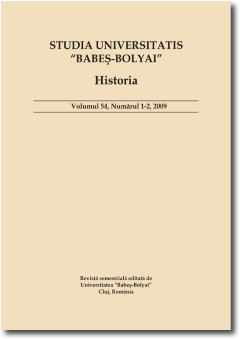ON THE EASTERN IDENTITY OF THE ROMANIAN GREEK-CATHOLIC CHURCH IN THE SECOND HALF OF THE NINETEENTH CENTURY
ON THE EASTERN IDENTITY OF THE ROMANIAN GREEK-CATHOLIC CHURCH IN THE SECOND HALF OF THE NINETEENTH CENTURY
Author(s): Cecilia Cârja, Ioan CârjaSubject(s): History
Published by: Studia Universitatis Babes-Bolyai
Keywords: The Greek-Catholic Church; confessional identity; tradition; Latinisation; synod; bishop.
Summary/Abstract: On the Eastern Identity of the Romanian Greek-Catholic Church in the Second Half of the Nineteenth Century. For the Romanian Greek-Catholic Church, whose ecclesiastical identity consists of elements of Eastern tradition combined with aspects taken from the Catholic confessional identity, the second half of the nineteenth century was a decisive period of constitutional organisation, which had an impact on several levels: dogmatic, institutional and disciplinary. Throughout this process of organisation and innovation of unprecedented scale in the history of this church, marked by momentous events like the establishment of the metropolitan see and of two new dioceses in 1853, the achievement of full canonical autonomy, the participation of the Romanian Greek-Catholic episcopate in the First Vatican Council, the organisation of three provincial synods, followed by a series of diocesan synods, the identity of Romanian Greek-Catholicism grew in complexity, in the sense that it acquired new identitarian elements from the patrimony of Latin-Rite Catholicism. The ecclesial and cultural context of the entire Catholic Church at that time evinced, in fact, the tendency to develop standardising policies, which eventually led to the Eastern-Rite Catholics’ getting closer to the Latin paradigm of Catholicism. Our article aims to inventory the elements of Eastern extraction in Romanian Greek-Catholicism during this period of transformations, by reference to the context that inevitably brought about the rapprochement between this church and Rome and also entailed its becoming more distanced from its original tradition of Byzantine descent.
Journal: Studia Universitatis Babes-Bolyai - Historia
- Issue Year: 57/2012
- Issue No: 2
- Page Range: 39-53
- Page Count: 15
- Language: English

